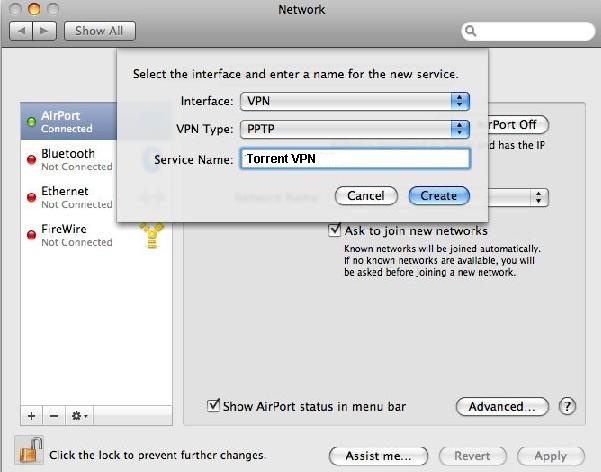

Vpn:Servers::DNS:OfferedServerAddresses:_array_index:2 = "8.8.8.8" Vpn:Servers::DNS:OfferedSearchDomains:_array_index:0 = "rp" Vpn:Servers::Server:MaximumSessions = 128 Vpn:Servers::Server:Logfile = "/var/log/ppp/vpnd.log" The output of which shows all of the VPN settings available via serveradmin (which is many more than what you see in the Server app: The serveradmin command can start the service, using the default settings, with no further configuration being required: The serveradmin command can be used to manage the service as well as the Server app. I know, I’ve described ways to manage these services from the command line before. Officially, the ports to forward are listed at. Both are configured automatically when using Apple AirPorts as gateway devices. L2TP is a bit more complicated, running over 1701, but also the IP-ESP protocol (IP Protocol 50). While deprecated(ish) PPTP runs over port 1723. Once configured, open incoming ports on the router/firewall.
#Setup vpn mac os x server password

The setting used becomes the address for the VPN service in the Everyone profile. The VPN Host Name field is used by administrators leveraging profiles. The VPN Settings screen has a number of options available, as seen here. To setup the VPN service, open the Server app and click on VPN in the Server app sidebar. Setting Up The VPN Service In macOS Server And while PPTP is still accessible via the command line, L2TP is now configured by default when you setup the server using the Server app. The server was once capable of running the two most commonly used VPN protocols: PPTP and L2TP. And as with many a service on macOS Server, this is one of the easiest VPN servers you’ll ever setup. MacOS Server has long had a VPN service to allow client computers to connect to a network even when they’re out of the home or office.


 0 kommentar(er)
0 kommentar(er)
